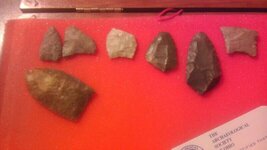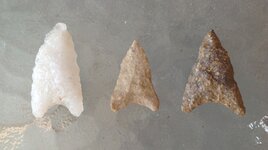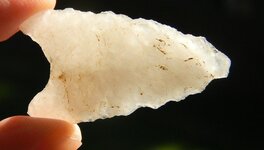trevmma
Bronze Member
- May 23, 2006
- 1,117
- 664
- Detector(s) used
- whites 1000
- Primary Interest:
- All Treasure Hunting
these all came from a field ,as a crow flies 2 miles away from New field I found definite clovis, what do u guys think. the complete came from Ohio river, the base and sides are ground on it , thanks
Attachments
Upvote
0










